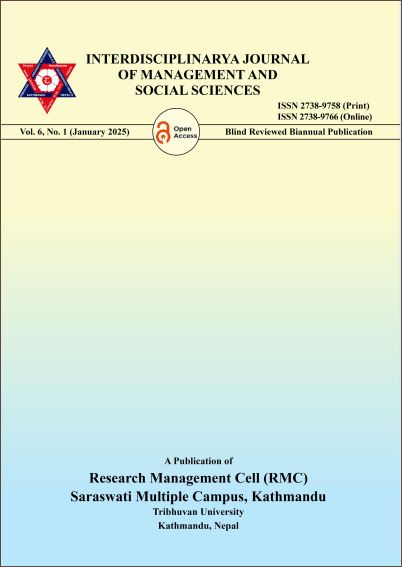Remittance-Driven Educational Choices: Trends in Nepal’s Private School Enrollment
DOI:
https://doi.org/10.3126/ijmss.v6i1.75382Keywords:
Foreign employment, Remittances, School enrollment, Education, Socio-economic dynamicsAbstract
The interplay between remittances, economic growth, and educational preferences has significantly shaped Nepal's private school enrollments over the last two decades. Remittances, a critical source of household income, have driven substantial changes in education accessibility, particularly in private schooling. This study investigates the relationship between remittance inflows, per capita GDP, and private school enrollments, emphasizing the socioeconomic dynamics and policy implications. This research employs a descriptive and analytical design, utilizing secondary data from 2000 to 2022. Key datasets include private school enrollments (Ministry of Finance), remittance inflows (Nepal Rastra Bank), per capita GDP (World Bank), and population growth rates. Statistical analyses involve trend evaluations, descriptive statistics, and correlation analysis to assess relationships among these variables. The findings reveal a strong positive correlation between remittances and private school enrollments (0.91) and between remittances and per capita GDP (0.97). Private school enrollments nearly tripled, increasing from 11.23% of total enrollments in 2000 to 29.67% in 2022. Rising remittances and GDP facilitated increased educational investments, particularly in private schools, but also highlighted regional and socioeconomic disparities. Population growth rates showed limited direct influence on enrollment trends. The study underscores the critical role of remittance-driven economic growth in shaping educational preferences while raising concerns about inequalities in access. Targeted policies to enhance public education, provide financial aid for disadvantaged families, and improve rural education infrastructure are essential to ensure equitable educational opportunities. The study’s findings align with prior research while offering a context-specific focus on Nepal’s education sector.
Downloads
Downloads
Published
How to Cite
Issue
Section
License

This work is licensed under a Creative Commons Attribution-NonCommercial 4.0 International License.

